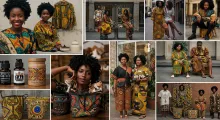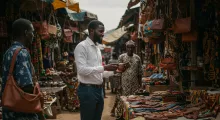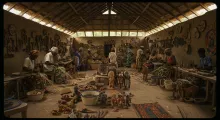Puppetry in Africa is more than child’s play — it’s an ancient and respected art form used to teach, entertain, and preserve cultural heritage. With carved wooden figures, masked faces, and elaborate ceremonies, African puppetry merges craftsmanship, music, and narrative in mesmerizing ways.
Roots and Rituals:
Bambara Puppetry (Mali) – A sacred art used during harvest festivals. Puppets represent animals, spirits, and ancestors, often accompanied by drumming and chants.
Sogo bò – The puppet masquerade of the Bozo people of Mali, combining aquatic folklore with theater.
Kumpo Figures (Senegal/The Gambia) – Masked puppets danced by invisible performers, symbolizing communal values and fertility.
Contemporary Innovation:
Modern puppeteers are using this ancient art to address contemporary issues like HIV/AIDS awareness, climate change, and gender equity:
Kenya Institute of Puppet Theatre (KIPT) – Uses mobile puppet shows to educate rural communities.
Masilo & the Bows – A puppetry company in South Africa fusing indigenous tales with animation and shadow theatre.
Puppetry in Africa is a living, breathing tradition — adapting across generations while preserving ancestral wisdom. It is visual poetry in motion.



